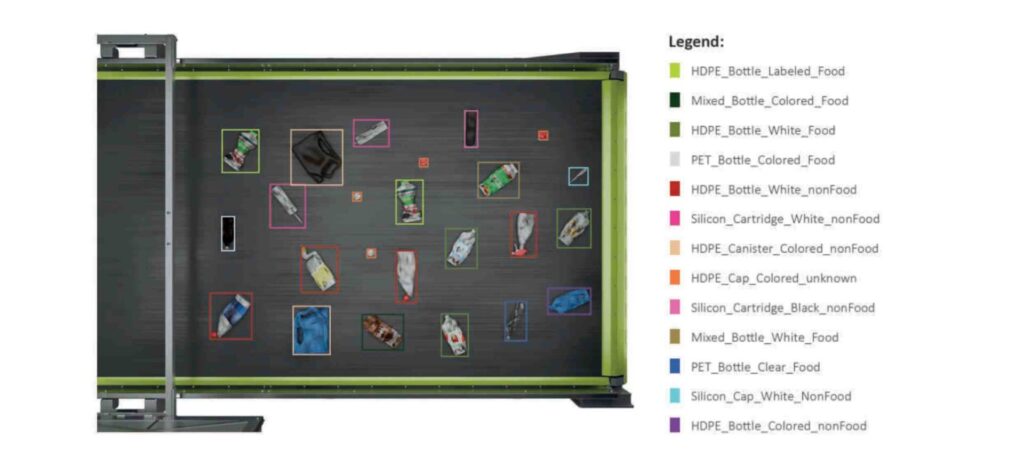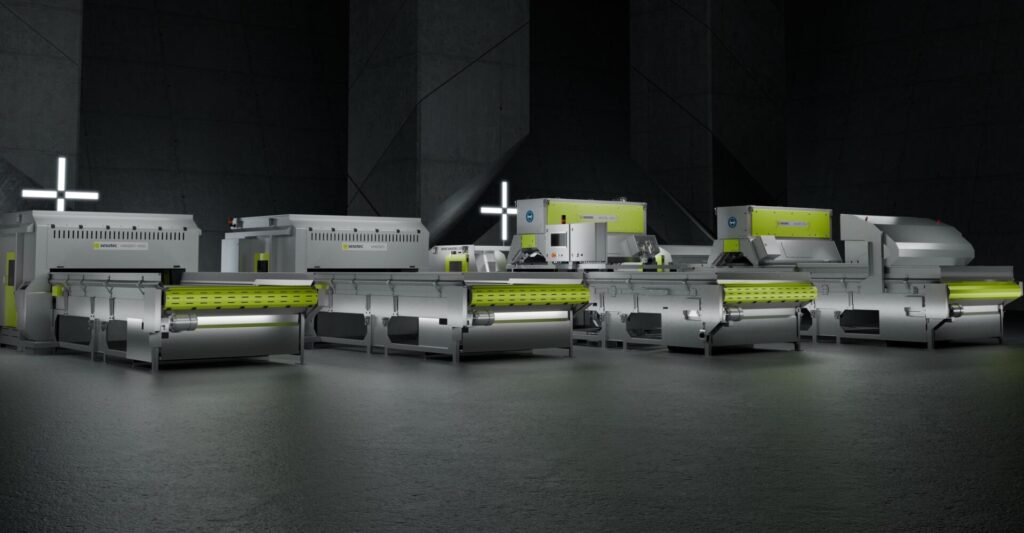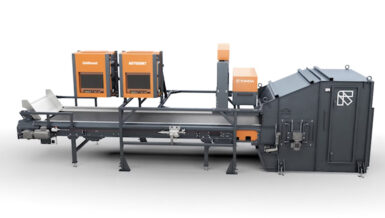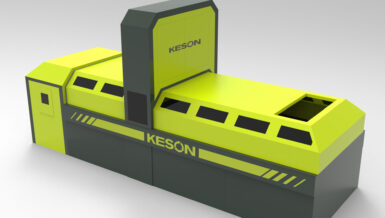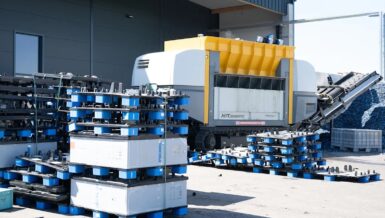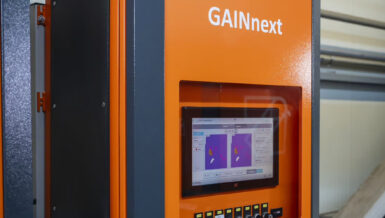Intelligent Sorting for Complex Requirements
Conventional sensor technologies often reach their limits, especially when it comes to distinguishing between similar types of plastic or complex material combinations. AI-powered solutions such as NIR-Ai and OBJECT-Ai enable significantly more precise classification, paving the way for higher-quality recyclates and more efficient processes.
NIR-Ai analyzes the near-infrared (NIR) spectra reflected by plastics and uses AI to accurately assign them to specific materials – even when conventional systems fail. This allows for reliable identification of monolayer vs. multilayer trays, detection of PA layers in bottles, and identification of specific additives. This distinction is essential for food-grade recycling and helps to prevent downcycling. In addition, NIR-Ai enables the reliable detection of PET full-sleeve bottles, which previously posed a significant challenge for automated sorting systems due to their visual similarity to other packaging types.
OBJECT-Ai, on the other hand, is based on object recognition using Artificial Intelligence and enhances sorting based on shape, color, and texture. This technology detects even the smallest differences – such as contaminants or misclassified items – and ensures an unprecedented level of sorting precision.
A major advancement is the AI-based classification of PET articles into food-grade and non-food-grade categories. OBJECT-Ai uses key visual features like dosing caps, spray heads, bottle shapes, or label design to differentiate product types. Even visually similar objects – such as ketchup and dishwashing liquid bottles – can be automatically assigned to the correct material class, ensuring compliance with regulatory thresholds for recycled food-grade PET.
Added Value for Customers and the Environment
By integrating AI into the sorting process, recycling companies benefit from consistently high efficiency, improved material quality, and greater profitability. At the same time, valuable resources are conserved – an important step toward a more sustainable circular economy.
The application areas for AI-based sorting technologies are diverse – from polymer differentiation and food/non-food recognition to the detection of colors, metals, and multilayer films.
Looking Ahead: More Intelligence for Sorting
The development continues: In the future, various sensor technologies could be interconnected via AI to further enhance sorting performance. One promising approach is instance segmentation, which enables individual objects in complex or overlapping scenes to be recognized and treated separately. More precise activation of sorting valves could significantly increase sorting accuracy and efficiency.
“With AI-based systems such as NIR-Ai and OBJECT-Ai, we’re able to significantly increase the accuracy and efficiency of sorting processes,” explains Andreas Hanus, Head of Development AI at Sesotec. “By leveraging machine learning algorithms for spectral and object data analysis, we can reliably differentiate between complex material types and structures—enabling a higher-quality recyclate output and optimizing the overall process performance.”
OBJECT-Ai uses the color sensor to assign specific properties to each object as part of the color and shape analysis. This ensures clear classification and differentiation of good and bad material based on shape, color and texture as well as precise determination of object boundaries (Graphic: Sesotec GmbH)
